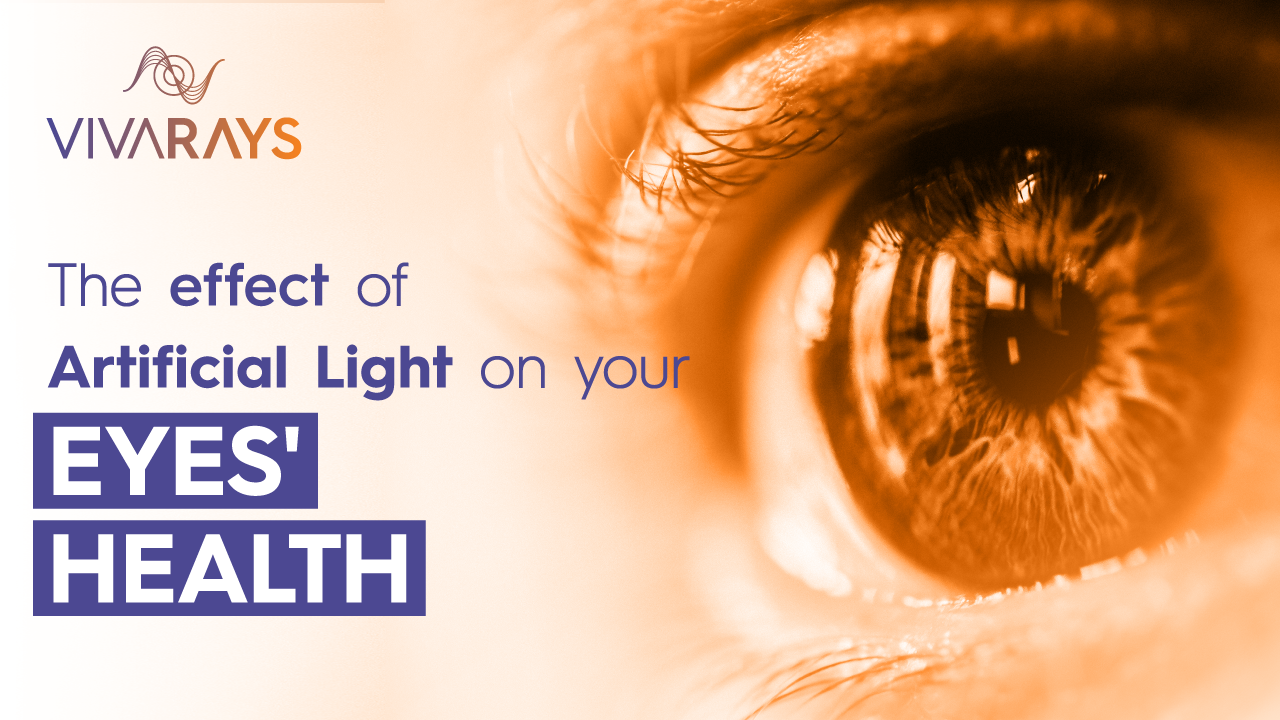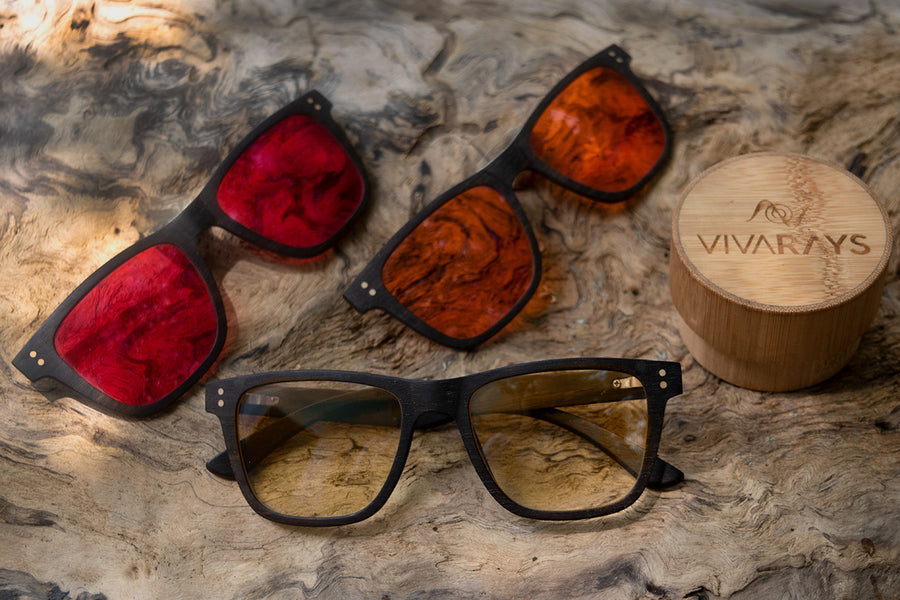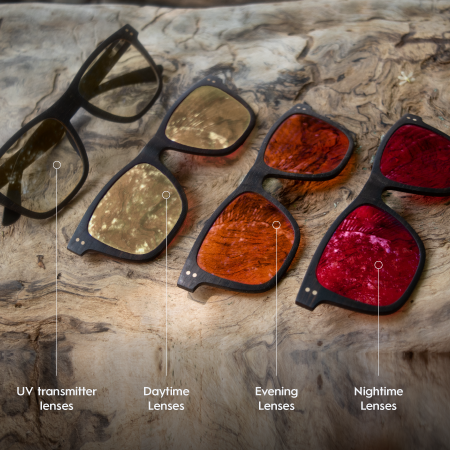THE EFFECT OF ARTIFICIAL LIGHT ON YOUR EYES HEALTH

It will be a two part series of EduLight on How to keep your eyes healthy in a 24/7 artificial light environment. We will explain the way in which artificial light affects your eyes and offer you strategies to protect your vision in a digital age.
These are some of the questions you asked:
- What is artificial light?
- What are the usual sources of artificial light in my environment?
- How does blue light affect eye health?
- What are the leading eye diseases in the digital age?
- Are children affected by artificial light?
- How do blue light glasses work?
- What is the difference between computer glasses and blue light glasses?
- Am I wearing the wrong blue light glasses?
- Do blue light blocking glasses really help?
- Do I have to wear blue light blocking glasses all day?
- Can I wear blue light blocking glasses outside?
- Can red light therapy help my eyes?
- What can I eat to improve my vision?
Let's address them all.
In our fast-paced world, artificial light has become an indispensable part of our daily lives. From the soft glow of our smartphones to the bright LED streetlights that line our city streets, we are constantly exposed to artificial light sources. While artificial light has undoubtedly brought about numerous benefits, it also carries a hidden cost:
THE DISRUPTION OF OUR CIRCADIAN RHYTHM AND NEGATIVE IMPACTS ON OUR EYE HEALTH.
And these two things are fundamental to human health.
But what artificial light is? How it affects your eyes, and which eye diseases emerge from constant exposure to artificial blue light? Zoom in:
Understanding the types of artificial light
Before we dive into the impact of artificial light on your eyes, it's crucial to understand the different types of artificial light and their characteristics. By artificial light, we mean any source of light that is man made. The most common sources of artificial light include:
Incandescent Bulbs: These traditional bulbs emit a warm, yellowish light and have been widely used for decades. They are the artificial light source closest to the spectrum of sunlight. Unfortunately, since they emit infrared light (heat), the lighting industry has moved away from them in preference to the much more energy efficient LED light.
LED Lights: Light Emitting Diode (LED) technology is now prevalent in homes and businesses. LED lights offer energy efficiency and come in various color temperatures, from warm to cool. Most of them today are white and emit a light spectrum completely different from the sun with a huge amount of blue light.
Fluorescent Lights: Found in offices and commercial spaces, fluorescent lights produce a cooler, bluish-white light. They have a high flicker rate and are associated with migraine and headaches.
Screens: Electronic devices like smartphones, tablets, and computers emit blue light, which can be particularly taxing on our eyes when viewed for extended periods.
See the graph below 👇🏻

The only source of light human species evolved with is the sun which has a complete light spectrum, from UV to visible light to infrared light. Artificial light on the other hand has an incomplete spectrum of light. It lacks UV and infrared light and is composed of an unbalanced light spectrum with a lot of blue and almost no red.
All our cellular functions are driven by our circadian rhythm, which consists of a natural rhythm governed by the presence or absence of light. The presence (or absence) of light and its composition allows your cells to know the time of day and to turn different metabolic functions on or off.
Artificial light on the other hand is constant, it doesn’t change with the hours of the day like the sun does. In the case of LEDs, TVs and phones, the light they emit is equivalent to the color temperature of the sun at noon. Being exposed to those after sunset and at night tricks your brain into thinking that it’s daytime when you are supposed to be alert and moving. This disrupts your circadian rhythm and leads to insomnia, fatigue, chronic diseases and even cancer.
“The only source of light we evolved with is the sun which has a complete light spectrum, from UV to visible light to infrared light.”
How does blue light affect eye health?
Remember this: Your eyes are the doorways to your entire body 👁️
When blue light is balanced by the rest of the solar spectrum, it has beneficial effects on your health. It helps to keep you focused, alert and gives you energy during the day. When it’s unbalanced by the rest of the solar spectrum, like it is in artificial lights, it has negative effects on your health. Some of these include:
Eye strain (computer vision syndrome)
The prolonged use of screens, a common feature of our modern lives, can lead to digital eye strain. Symptoms include eye fatigue, dryness, redness, and blurry vision. Blue light has short wavelengths, which causes light to scatter more easily than other colors. When looking at a computer screen or other digital devices that emit significant amounts of blue light, the scattering of light reduces contrast which leads to digital eye strain.
Dry eye syndrome
Extended exposure to artificial light can reduce your blink rate, leading to decreased tear production and dry eyes. This condition can be particularly problematic for office workers and avid screen users.
Myopia
Since blue light has a higher index of refraction than the rest of visible light, it focuses in front of the retina instead of directly on it so your eye muscles have to contract to adapt to this inadequate focus. Over time, excess blue light exposure can lead to a condition called blue myopia.
Increased risk of age-related macular degeneration (AMD)
Exposure to excessive blue light, especially from screens and LEDs, has been linked to an increased risk of AMD [1]. AMD is a condition that affects the macula, the part of the retina responsible for sharp, central vision. Over time, AMD can lead to vision loss and blindness.
Poor vision
Blue light has the ability to generate oxidative and thermal stress in the retina. This is why long periods of exposure to blue light unbalanced by the rest of the spectrum like in artificial light have been shown to accelerate the death of photoreceptors leading to poor vision.
Cataracts
The lens is a natural crystal in the eye that reduces and filters the light that enters the eye. As it degenerates because of excessive artificial blue light that is not balanced and with the other frequencies of light, it becomes opaque and you develop cataracts. [2]
Inadequate blood flow
When you are stimulated by high-energy blue light all day, your stress hormone (cortisol) levels increase. Since cortisol is responsible for the proper regulation of blood sugar, over time blue light exposure will lead to high insulin and blood glucose levels even if you consume a low-carb diet. This can lead to poor blood flow everywhere, including your eyes which then accumulate metabolic byproducts (cellular garbage) and don’t get enough nutrients and oxygen for repair leading to vision impairment and eye problems.
"The presence (or absence) of light and its composition allows your cells to know the time of day and to turn different metabolic functions on or off."
Are children affected by artificial light?
Children’s eyes are more at risk of blue light toxicity because their lens is more transparent and their pupils are bigger so more light gets through. It’s a good thing when they are around healthy light but detrimental when they get exposed to harmful artificial light.
Myopia and eye problems are also on the rise in children. During the two years of the pandemic, myopia has gone up three times compared to the previous years in children attending school. Due to the isolation and lockdown, they spent even more time than usual looking at screens which increased the damage to their eyes. [3]
Nowadays, most schools have interactive whiteboards, and fluorescent lights on the ceiling and kids will either have a laptop or iPad to learn. This constant exposure to artificial light during the day increases their risk of anxiety, ADHD, sleep problems and learning disabilities.
To learn more about the impact of artificial light on your kids, check out our blog post ”How artificial light is destroying your children’s health”.
Now when you learn more about the effects of artificial light, bring it to your conscious next time you sit in front of the screen or turn on that LED lamp by your bed.
Stay tuned for the 2nd part of EduLight when we will explain to you how to recognize credible tools that can protect your vision.🌞




Leave a comment